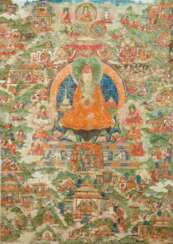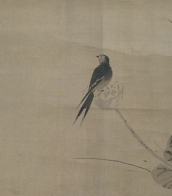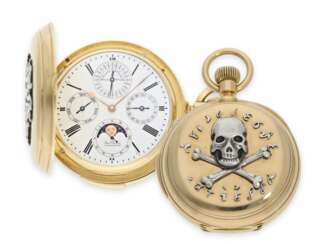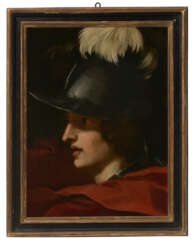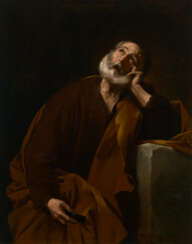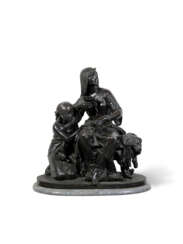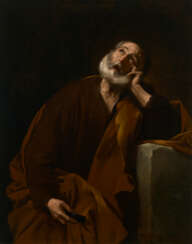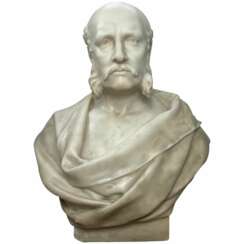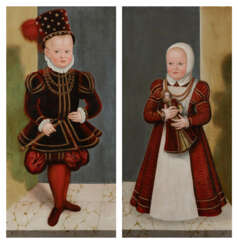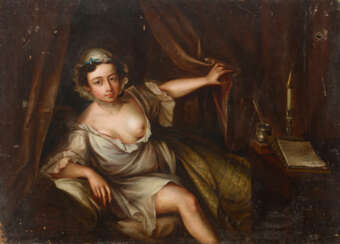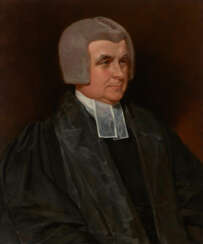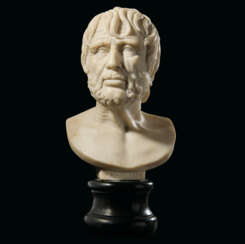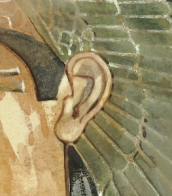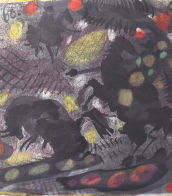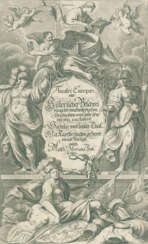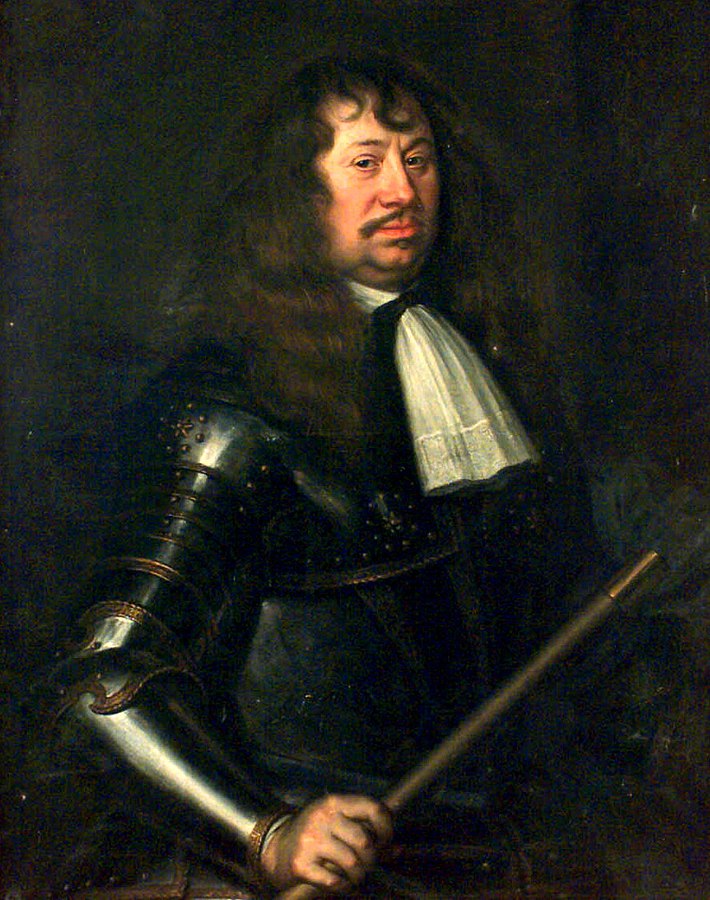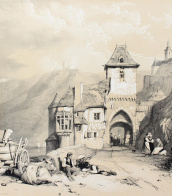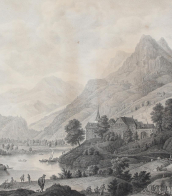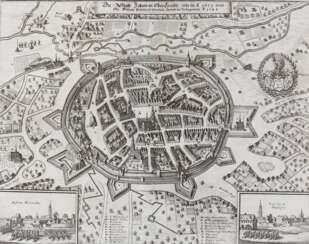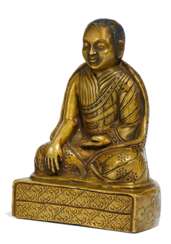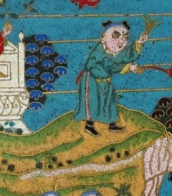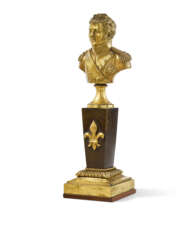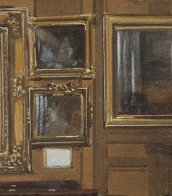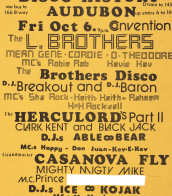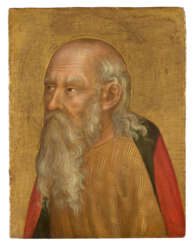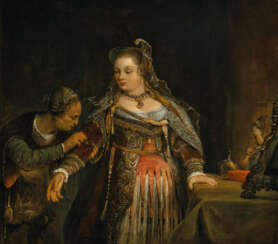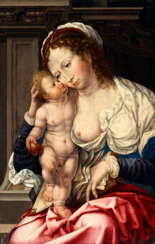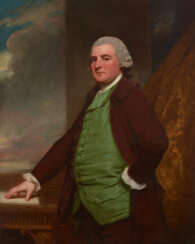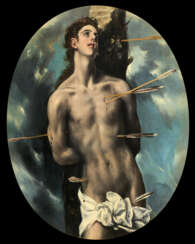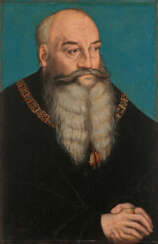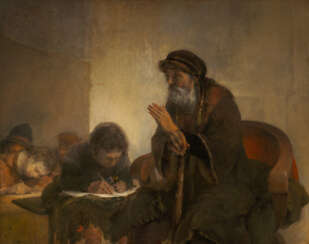berühmte & historische persönlichkeiten
_Princess_of_Conti_by_Pierre_Gobert.jpg)
Pierre Gobert was a French court painter, known for his portrait paintings.
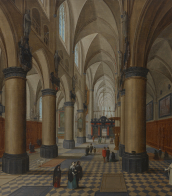

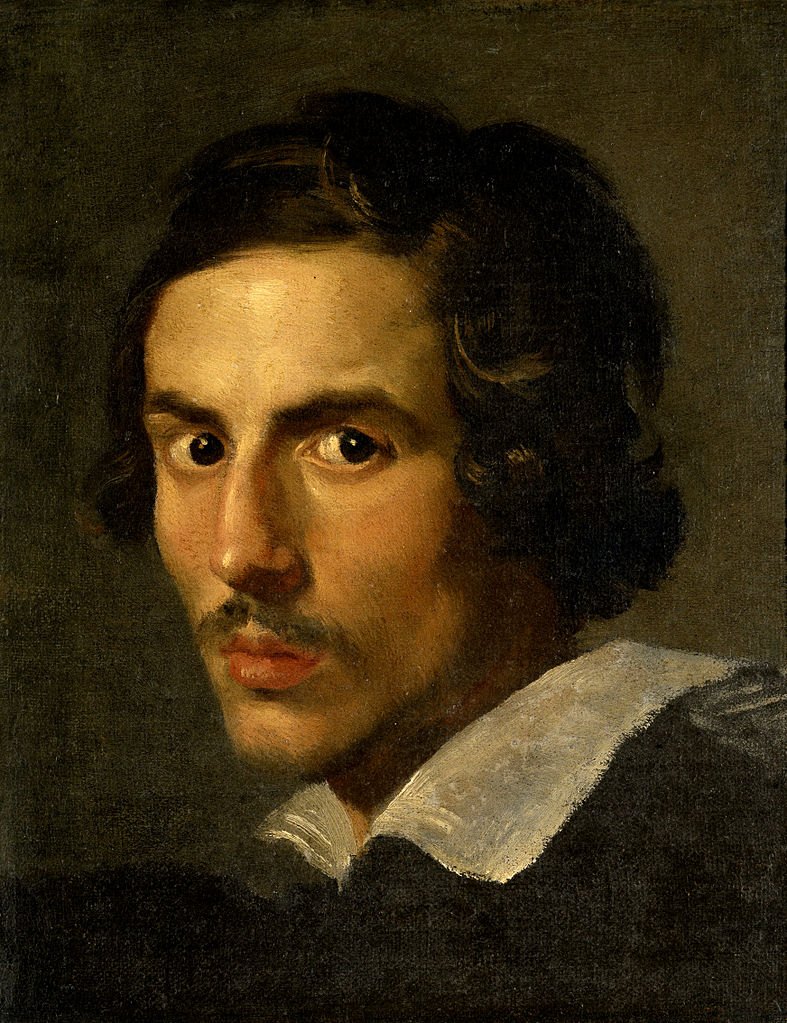
Giovanni Lorenzo Bernini, an Italian artist, is celebrated as one of the most remarkable sculptors and architects of the Baroque era. Born in Naples in 1598, Bernini's family moved to Rome when he was a child, where he spent most of his life shaping the city's artistic landscape. His prodigious talent emerged early, evident in works created in collaboration with his father, Pietro Bernini, and soon caught the attention of influential patrons like Cardinal Scipione Borghese and Pope Paul V.
Bernini's work, characterized by dynamic and exuberant style, spanned various genres including portraiture, tomb sculpture, and religious and mythological representations. His ability to turn marble into lifelike figures and scenes, blending realism with emotional intensity, was unparalleled. Key works like "Aeneas and Anchises," "Pluto and Proserpina," and "Apollo and Daphne" exemplify this mastery.
Not confined to sculpture, Bernini was also an accomplished architect, contributing significantly to the architectural landscape of Rome. His involvement with St. Peter's Basilica, notably the Baldacchino and the design of St. Peter's Square, reflect his vision of merging architecture with sculpture to create a cohesive and impactful experience. His work on the Cornaro Chapel, including the famous "The Ecstasy of Saint Teresa," showcases this integration, combining sculpture, architecture, and light to stunning effect.
Bernini's influence extended beyond Rome. In 1665, he was invited by Louis XIV to France to work on the Louvre, though his architectural designs were not realized. His portrait bust of Louis XIV, however, remains a testament to his skill in capturing not just the likeness but the essence of his subjects.
A man of deep faith, Bernini's works often reflected his religious devotion, though he was also known for his caricatures and playful sketches, revealing a lighter side to his personality. His artistic legacy, characterized by the fusion of various art forms and the dramatic use of light and space, continues to influence and inspire.
For collectors and experts in art and antiques, Bernini's works remain a pinnacle of Baroque artistry, a testament to his innovative spirit and technical brilliance. His pieces, found in museums and galleries, continue to draw admiration for their emotional depth and exquisite craftsmanship.
Stay updated on new discoveries and sales of Bernini's works by signing up for our newsletter, exclusively focused on his art and upcoming auction events.

.jpg)
Jusepe de Ribera, a Spanish painter, etcher, and draughtsman, was a notable figure in the world of art, renowned for his distinct style and contribution to Castilian tenebrism. Born in 1591 in Játiva, near Valencia, Spain, Ribera's early life and artistic origins are somewhat shrouded in mystery, with no definitive documentation on his initial training. However, it's speculated that he might have started his artistic journey in Valencia.
Ribera's career took a significant turn when he moved to Italy, where he spent the majority of his professional life, predominantly in Naples, a Spanish territory at that time. He arrived in Naples around 1616 and soon established himself as an important artist in the city. His marriage to Caterina Azzolino, daughter of Sicilian painter Giovanni Bernardino Azzolino, in November of the same year, further solidified his connections in the Italian art scene.
Ribera was deeply influenced by Caravaggio and is often described as one of Caravaggio's followers. His early works displayed a marked tenebrism, characterized by stark chiaroscuro and a robust, scratchy handling of paint. However, Ribera's style evolved over time, moving away from this intense tenebrism to incorporate more color and softer modeling in his later works.
His body of work is diverse, including altarpieces, religious subjects, mythological themes, and portraits. Ribera had a penchant for depicting scenes of martyrdom with graphic realism, as seen in works like the celebrated "Martyrdom of St Bartholomew." Yet, he was also capable of expressing great tenderness, evident in paintings such as "The Adoration of the Shepherds." His secular subjects often depicted philosophers as beggars or vagabonds, adding a unique dimension to the Baroque repertoire.
Ribera's influence extended beyond Naples to Spain and the broader European art scene. He played a foundational role in fostering a respect for individual humanity in Spanish art, a trend that continued with artists like Velázquez and Goya. His works were widely exported to Spain and had a significant impact on both Italian and Spanish art. Ribera remains a highly respected figure in art history, and his works are featured in prominent museums and galleries worldwide, showcasing his enduring legacy in the realm of art and culture.
For art collectors and experts, Ribera's works represent a crucial chapter in the development of European art, particularly in the context of the Spanish Baroque and the evolution of tenebrism. His innovative approach to subject matter and technique continues to inspire and captivate audiences, making his works highly sought after in the world of art and antiques.
To stay updated on sales and auction events related to Jusepe de Ribera, sign up for our updates. This subscription service is tailored specifically for enthusiasts and experts in art and antiques, ensuring that you are the first to know about new opportunities to acquire works related to this influential artist.
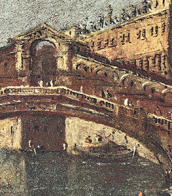
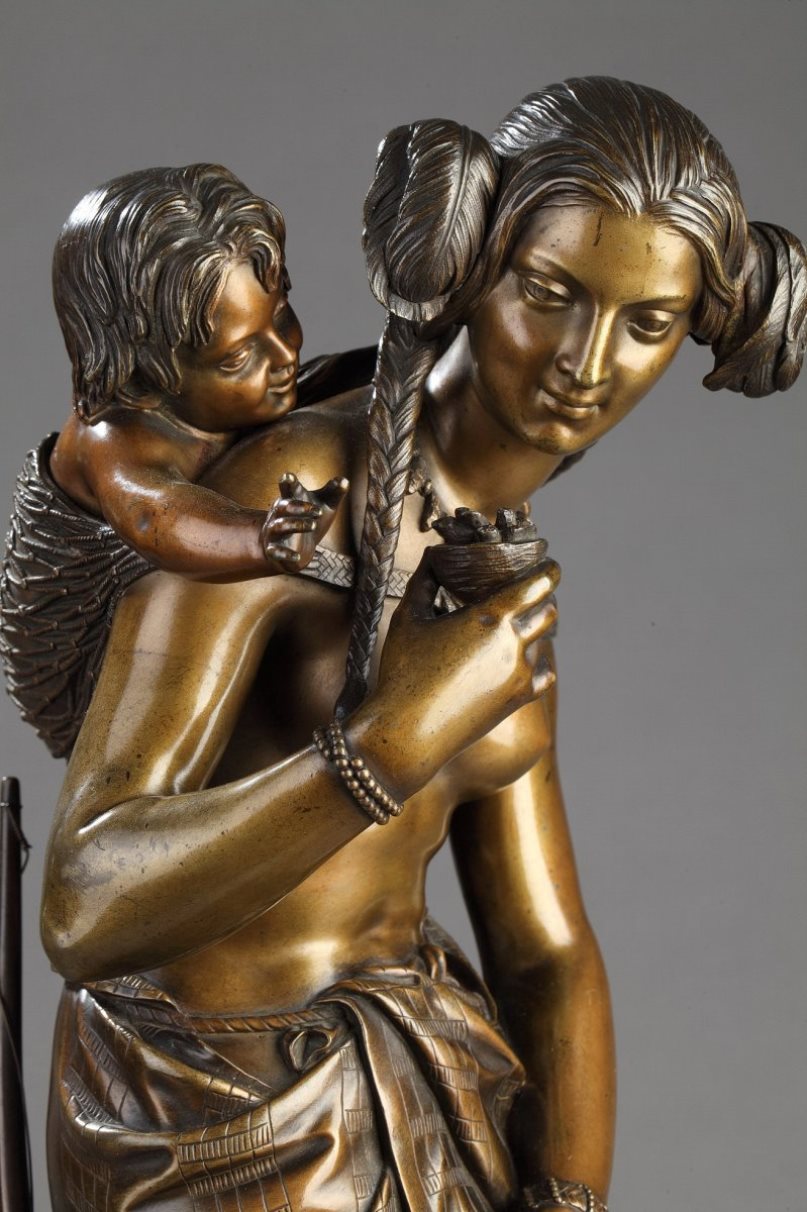
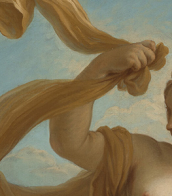
.jpg)
Jusepe de Ribera, a Spanish painter, etcher, and draughtsman, was a notable figure in the world of art, renowned for his distinct style and contribution to Castilian tenebrism. Born in 1591 in Játiva, near Valencia, Spain, Ribera's early life and artistic origins are somewhat shrouded in mystery, with no definitive documentation on his initial training. However, it's speculated that he might have started his artistic journey in Valencia.
Ribera's career took a significant turn when he moved to Italy, where he spent the majority of his professional life, predominantly in Naples, a Spanish territory at that time. He arrived in Naples around 1616 and soon established himself as an important artist in the city. His marriage to Caterina Azzolino, daughter of Sicilian painter Giovanni Bernardino Azzolino, in November of the same year, further solidified his connections in the Italian art scene.
Ribera was deeply influenced by Caravaggio and is often described as one of Caravaggio's followers. His early works displayed a marked tenebrism, characterized by stark chiaroscuro and a robust, scratchy handling of paint. However, Ribera's style evolved over time, moving away from this intense tenebrism to incorporate more color and softer modeling in his later works.
His body of work is diverse, including altarpieces, religious subjects, mythological themes, and portraits. Ribera had a penchant for depicting scenes of martyrdom with graphic realism, as seen in works like the celebrated "Martyrdom of St Bartholomew." Yet, he was also capable of expressing great tenderness, evident in paintings such as "The Adoration of the Shepherds." His secular subjects often depicted philosophers as beggars or vagabonds, adding a unique dimension to the Baroque repertoire.
Ribera's influence extended beyond Naples to Spain and the broader European art scene. He played a foundational role in fostering a respect for individual humanity in Spanish art, a trend that continued with artists like Velázquez and Goya. His works were widely exported to Spain and had a significant impact on both Italian and Spanish art. Ribera remains a highly respected figure in art history, and his works are featured in prominent museums and galleries worldwide, showcasing his enduring legacy in the realm of art and culture.
For art collectors and experts, Ribera's works represent a crucial chapter in the development of European art, particularly in the context of the Spanish Baroque and the evolution of tenebrism. His innovative approach to subject matter and technique continues to inspire and captivate audiences, making his works highly sought after in the world of art and antiques.
To stay updated on sales and auction events related to Jusepe de Ribera, sign up for our updates. This subscription service is tailored specifically for enthusiasts and experts in art and antiques, ensuring that you are the first to know about new opportunities to acquire works related to this influential artist.
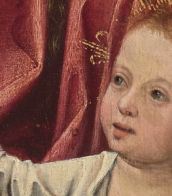
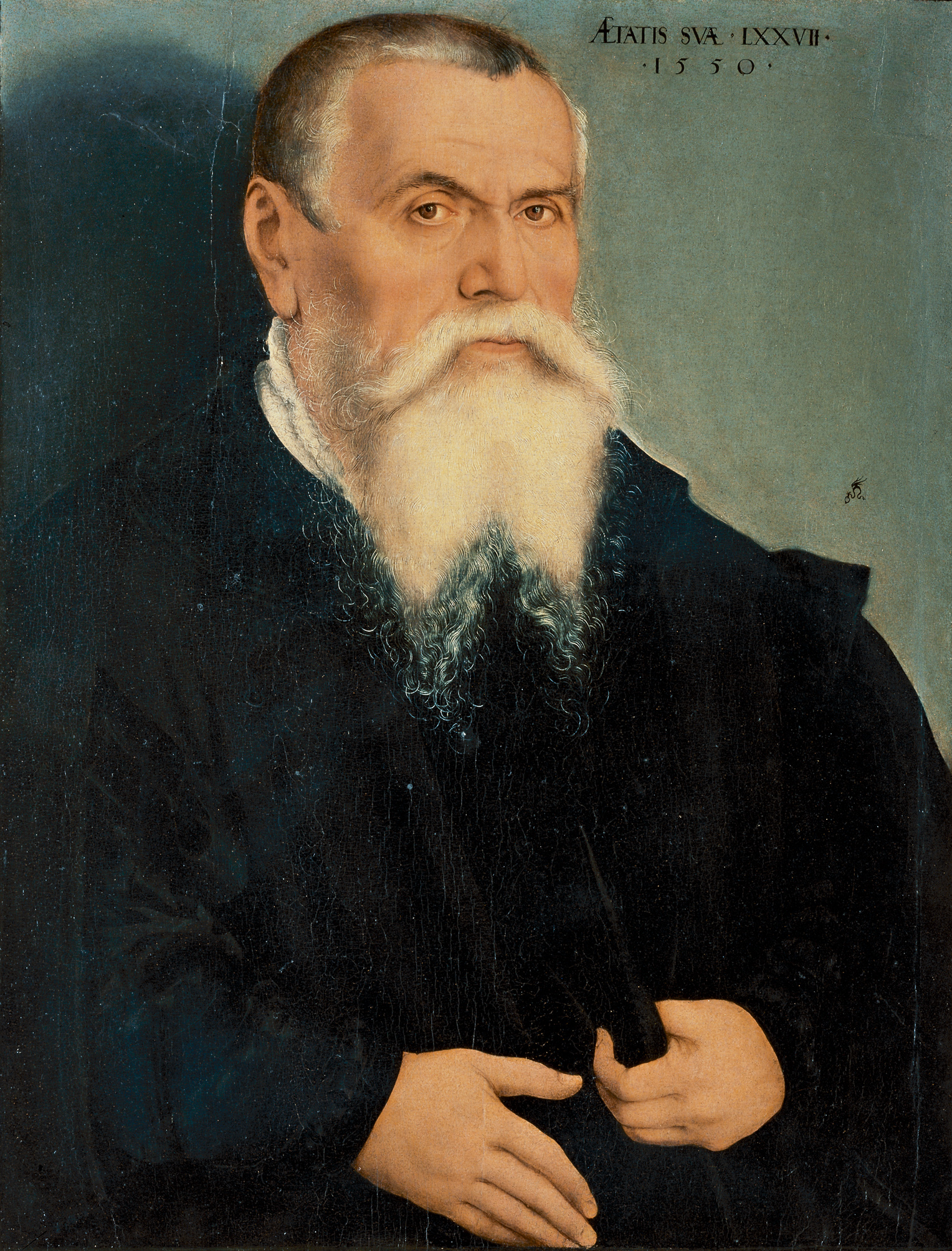
Lucas Cranach the Elder was a pivotal figure in German Renaissance art. As a leading painter of Saxony, his influence spanned across the 16th century, making significant contributions through his paintings, woodcuts, and engravings. His artistic journey began under the tutelage of his father, Hans Maler, and saw him becoming court painter to the Elector of Saxony, where he produced a vast array of works including altarpieces, court portraits, and notably, portraits of Protestant Reformers.
Cranach's artistry was not confined to any single genre. He was renowned for his portraits of the aristocracy, deeply symbolic religious paintings, and engaging mythological scenes. His ability to capture the essence of the Protestant Reformation, notably through his portraits of Martin Luther, showcases his close connection to the movement and his role as a key figure in conveying its ideals through art.
A significant part of Cranach's legacy is his workshop in Wittenberg, which was a hub of artistic production. This workshop produced numerous works that bore his distinctive winged serpent signature, a mark of quality and innovation in the art of the period. Cranach's workshop was known for its efficient operation, enabling the production of a large volume of works that catered to the high demand of his time.
For collectors and experts in art and antiques, Lucas Cranach the Elder's work represents an intriguing intersection of art, culture, and history. His contributions to Renaissance art and his unique portrayal of religious and mythological themes continue to captivate audiences, making his work highly sought after in the world of art collection.
To explore more about Lucas Cranach the Elder's fascinating contributions to art and to stay updated on new discoveries or auction events related to his works, consider signing up for specialized updates. This subscription is designed for enthusiasts keen on delving deeper into the rich tapestry of Renaissance art and history, ensuring they remain well-informed of relevant sales and scholarly insights.
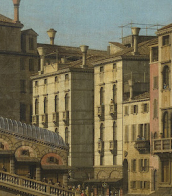
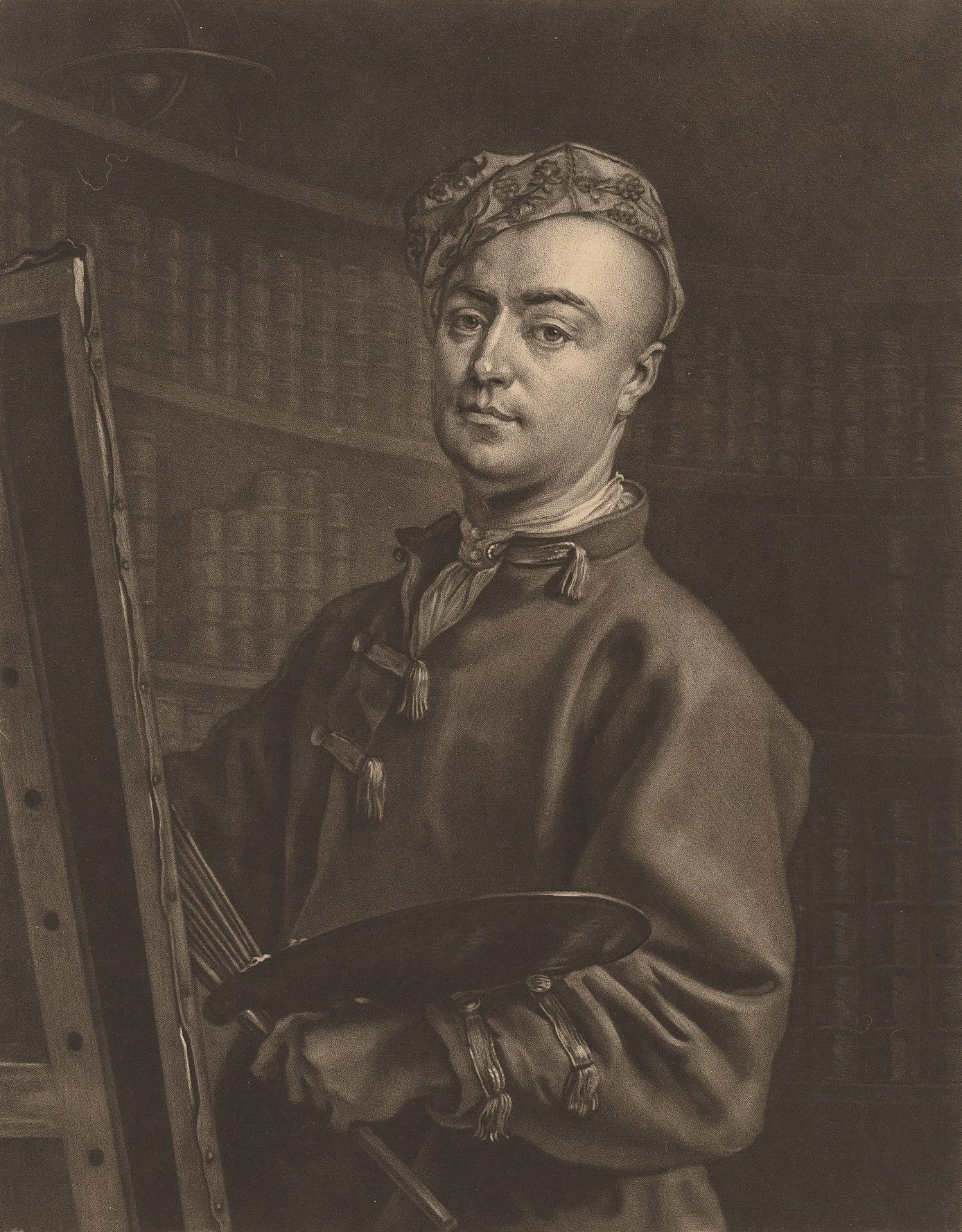
Philip Mercier (French: Philippe Mercier) was a French painter, draughtsman and printmaker, a leading representative of the early Rococo period, a student of Antoine Paine and follower of Antoine Watteau. Mercier grew up and studied in Berlin, but spent most of his artistic life in England; he also worked in France, Italy and Portugal.
His artistic legacy consists of about three hundred paintings, drawings and etchings: portraits and genre scenes. He was strongly influenced by his French and English contemporaries - Antoine Watteau, Jean-Simeon Chardin and William Hogarth — and exercised a marked influence on English Georgian painting as one of the creators of a variant of the informal group portrait - the so-called "conversation scene.
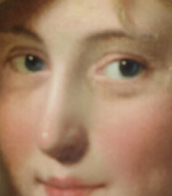
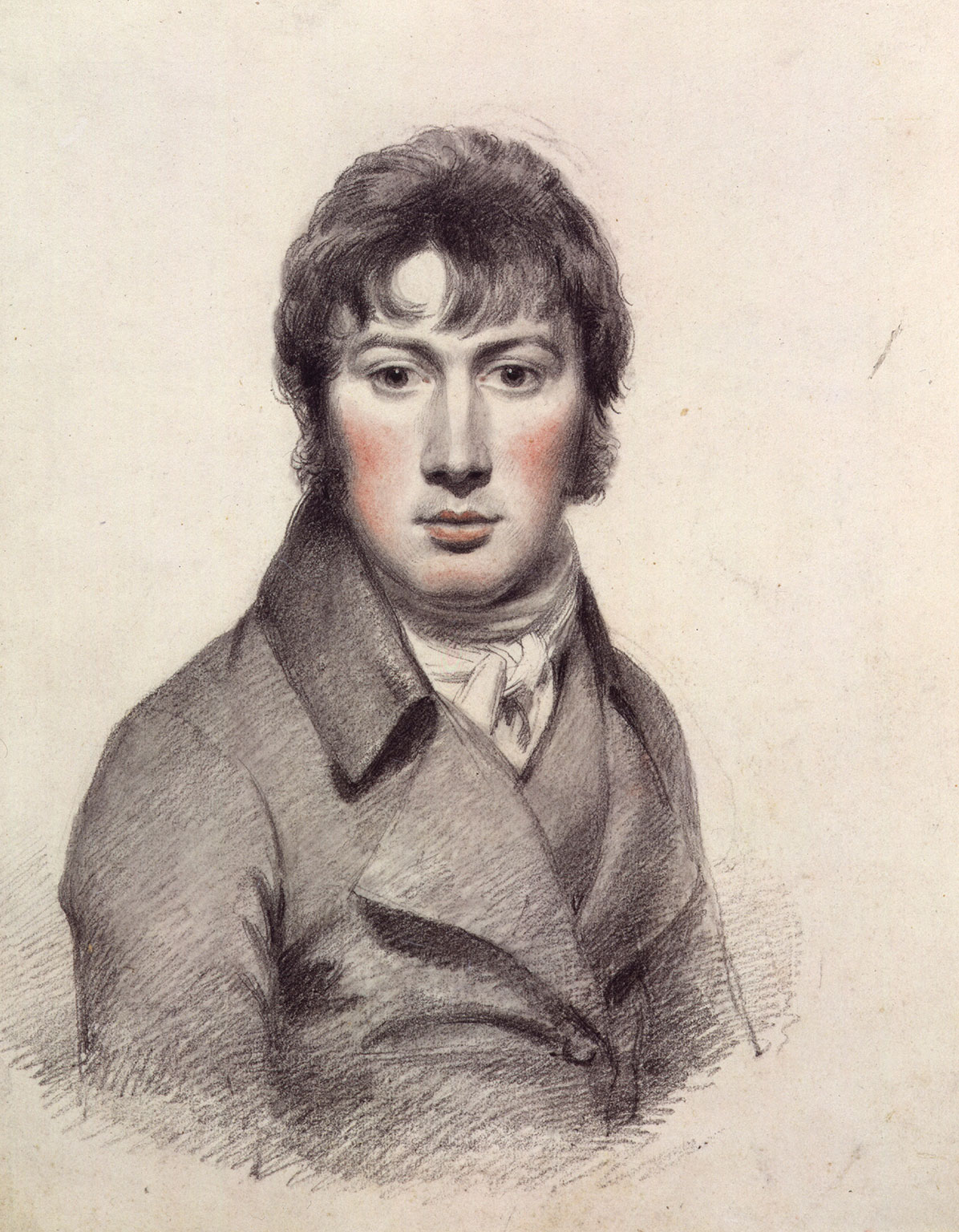
John Constable was an English landscape painter in the Romantic tradition. Born in Suffolk, he is known principally for revolutionising the genre of landscape painting with his pictures of Dedham Vale, the area surrounding his home — now known as "Constable Country" — which he invested with an intensity of affection. "I should paint my own places best", he wrote to his friend John Fisher in 1821, "painting is but another word for feeling".
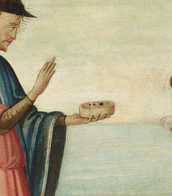
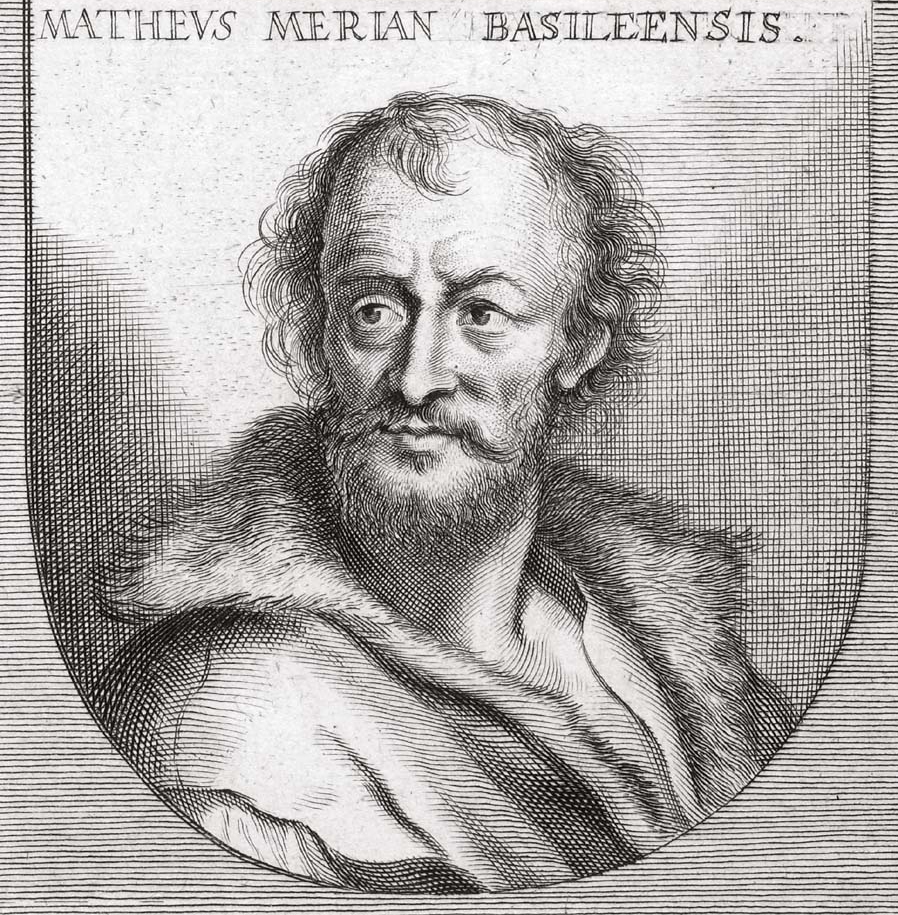
Matthäus Merian the Elder was a Swiss engraver and draftsman, renowned for his detailed and intricate works during the Baroque era. Born in Basel in 1593, he made significant contributions to art, particularly through his engravings and illustrations. Merian's artistic journey led him to Frankfurt am Main, where he produced a plethora of engravings depicting various subjects, including battles, hunts, and topographic views of European towns.
One of his notable contributions is his work on "Theatrum Europaeum," a series that chronicled contemporary history. Merian's legacy continued through his family, with his children, particularly Matthäus Merian Jr. and Caspar, taking over his publishing house after his death in 1650. They preserved and extended their father's artistic heritage, continuing to publish significant works like the "Topographia Germaniae."
Matthäus Merian the Elder's artistry was not confined to historical and topographical subjects; he also excelled in creating alchemical illustrations, demonstrating his versatility and depth as an artist. His works, such as those found in the "Musaeum Hermeticum" and "Atalanta Fugiens," display the finesse and detail that characterize his style. Today, Merian's works are preserved in various museums and collections, offering a window into the artistic and cultural milieu of the 17th century.
For collectors and experts in art and antiques, Merian's works represent a significant chapter in the history of engraving and illustration, reflecting the rich cultural and historical narratives of his time. If you are keen on exploring more about Matthäus Merian the Elder's contributions to art and history, consider signing up for updates on sales and auction events related to his works.
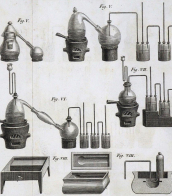

Matthäus Merian the Elder was a Swiss engraver and draftsman, renowned for his detailed and intricate works during the Baroque era. Born in Basel in 1593, he made significant contributions to art, particularly through his engravings and illustrations. Merian's artistic journey led him to Frankfurt am Main, where he produced a plethora of engravings depicting various subjects, including battles, hunts, and topographic views of European towns.
One of his notable contributions is his work on "Theatrum Europaeum," a series that chronicled contemporary history. Merian's legacy continued through his family, with his children, particularly Matthäus Merian Jr. and Caspar, taking over his publishing house after his death in 1650. They preserved and extended their father's artistic heritage, continuing to publish significant works like the "Topographia Germaniae."
Matthäus Merian the Elder's artistry was not confined to historical and topographical subjects; he also excelled in creating alchemical illustrations, demonstrating his versatility and depth as an artist. His works, such as those found in the "Musaeum Hermeticum" and "Atalanta Fugiens," display the finesse and detail that characterize his style. Today, Merian's works are preserved in various museums and collections, offering a window into the artistic and cultural milieu of the 17th century.
For collectors and experts in art and antiques, Merian's works represent a significant chapter in the history of engraving and illustration, reflecting the rich cultural and historical narratives of his time. If you are keen on exploring more about Matthäus Merian the Elder's contributions to art and history, consider signing up for updates on sales and auction events related to his works.
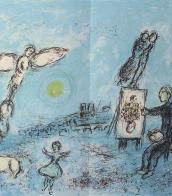
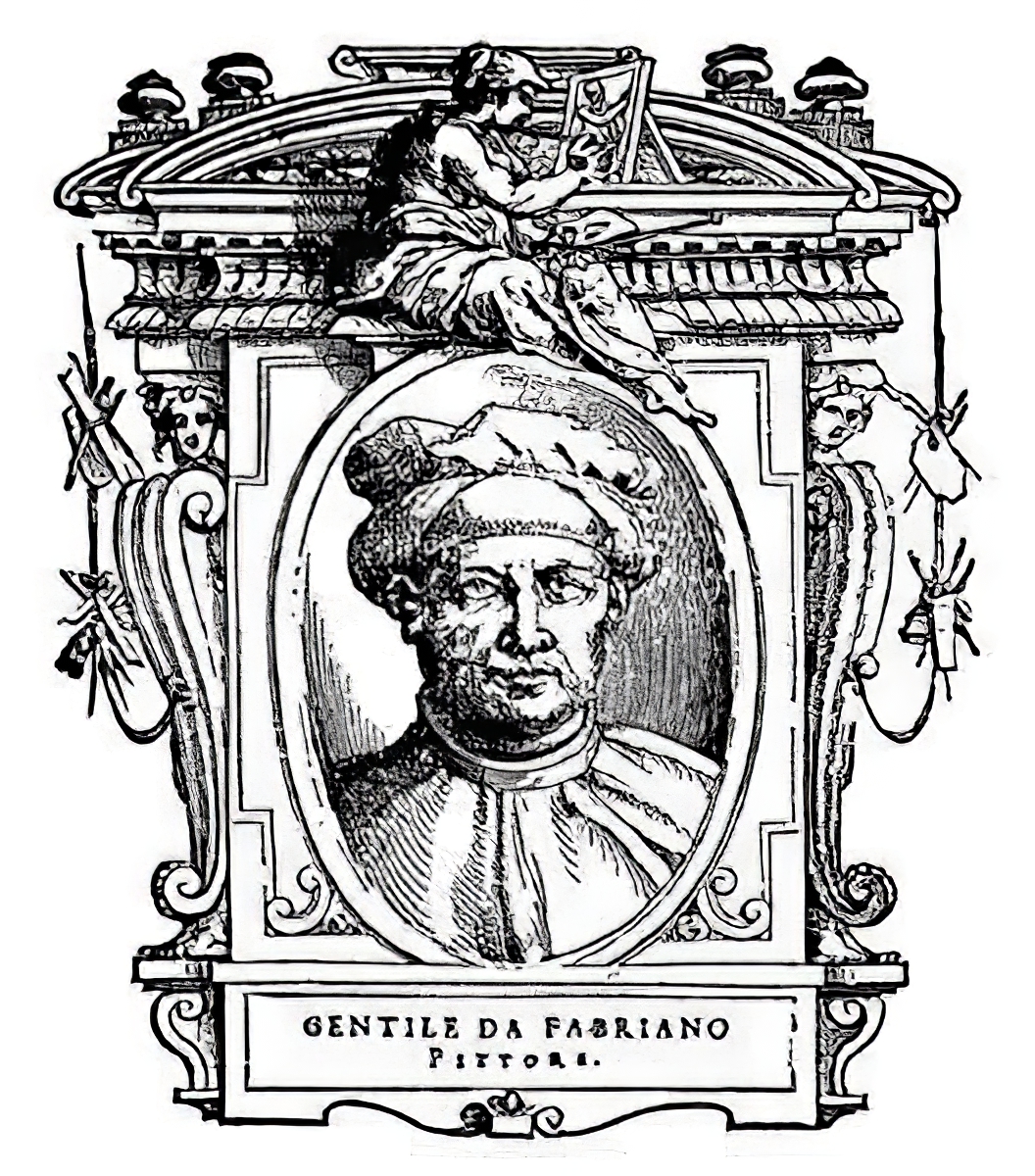
Gentile da Fabriano was an Italian painter known for his participation in the International Gothic painter style. He worked in various places in central Italy, mostly in Tuscany. His best-known works are his Adoration of the Magi from the Strozzi Altarpiece (1423), and the Flight into Egypt. Following a visit to Florence in the 1419, he came in contact with humanism, which influenced his work throughout the rest of his career. He became highly influential for other painters in Florence, especially because of his use of detail based on the observations he made of the natural world.
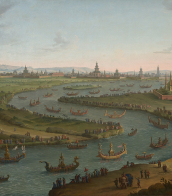
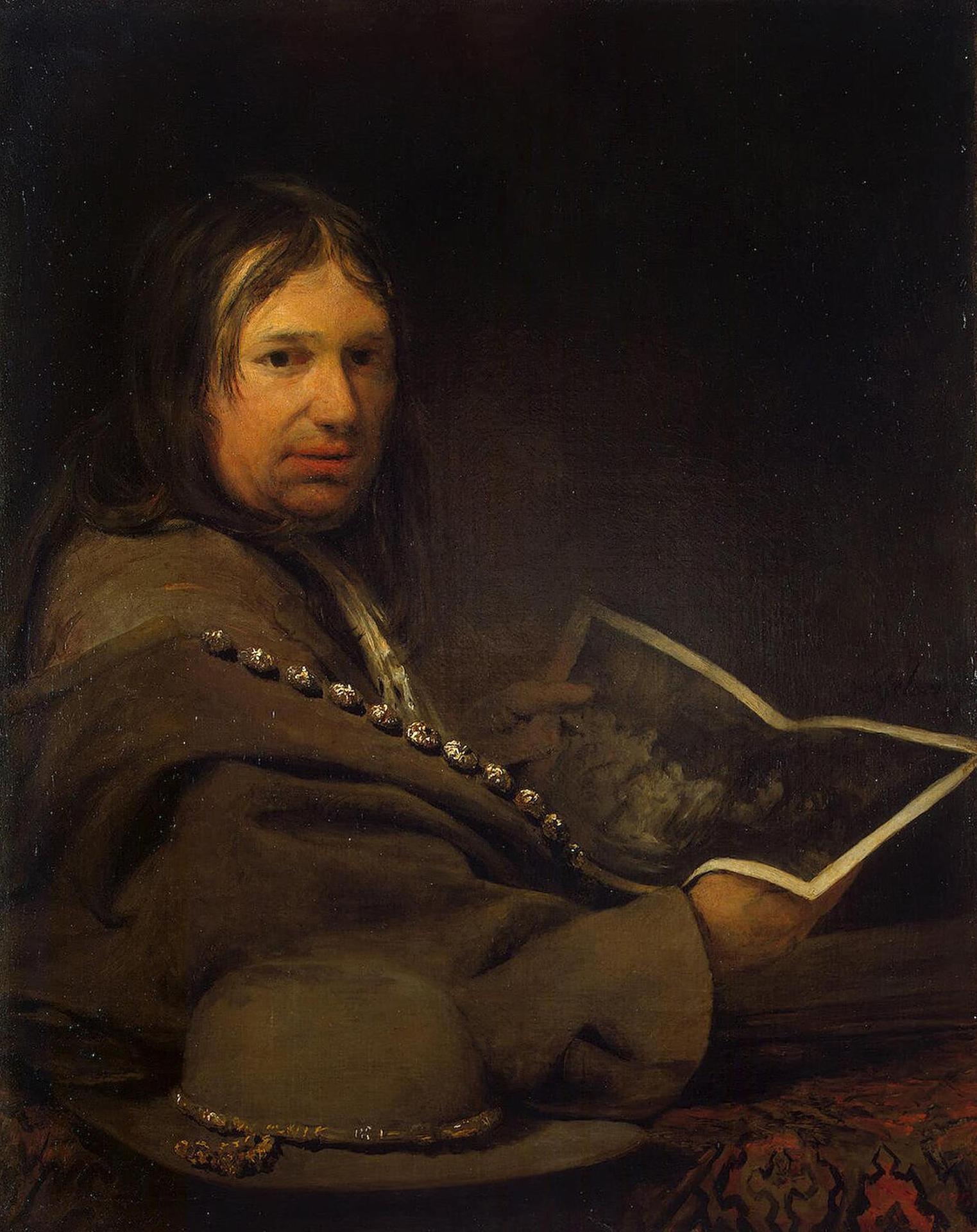
Aert de Gelder was a Dutch painter. He was the only Dutch artist to paint in the tradition of Rembrandt's late style into the 18th century.
As author of biblical scenes and portraits his style was inspired by Rembrandt's, using his artistic ideas, well into the 18th century, without being influenced by contemporary new fashions. From the artistic point of view his work can not be considered as passive imitation of the master; indeed, it stands for inventiveness in the narrative, taste for the theatrical and a strong emotional charge of the characters. All these traits made him one of the most important interpreters of Dutch painting of the late seventeenth century.
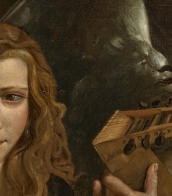
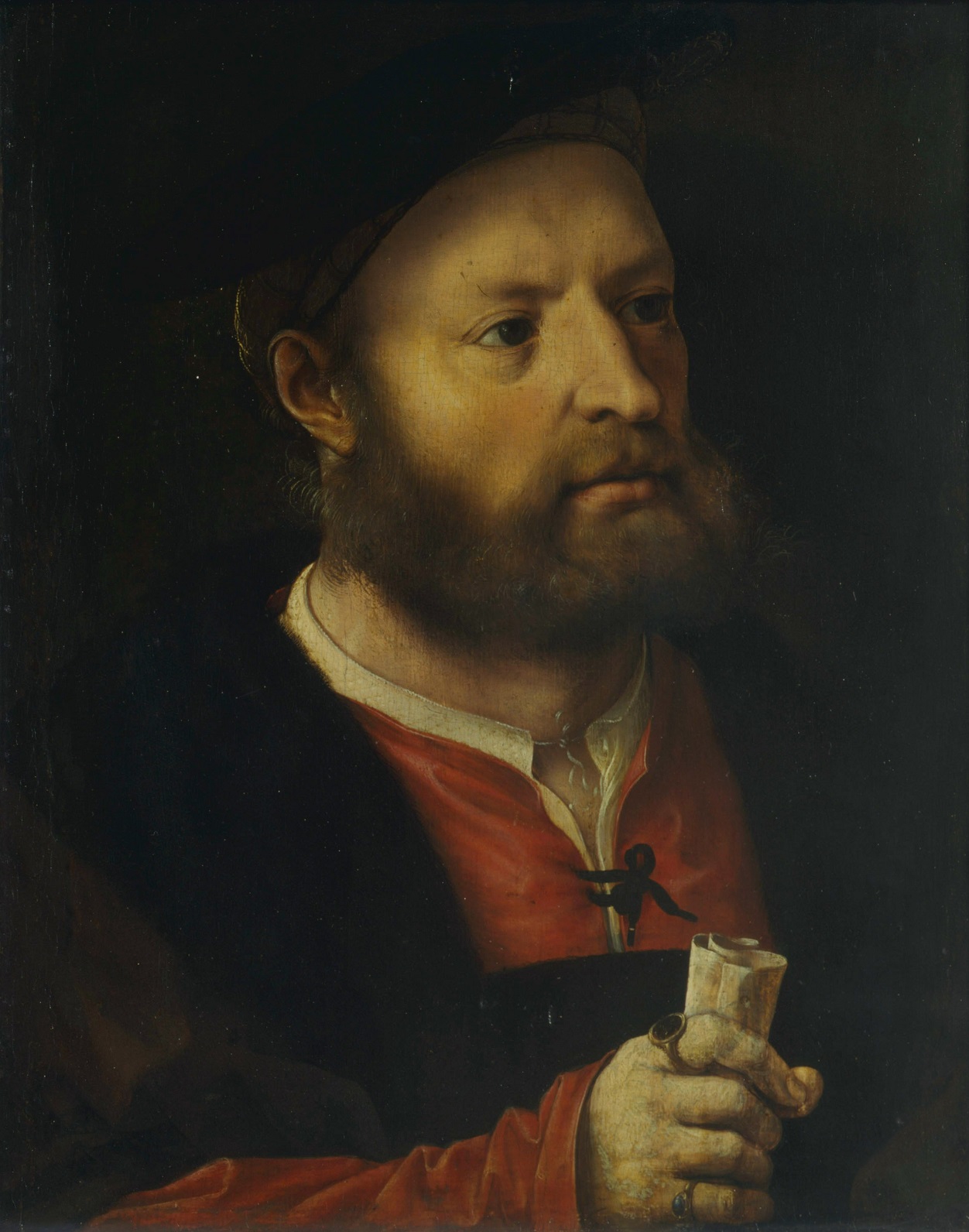
Jan Gossaert was a French-speaking painter from the Low Countries also known as Jan Mabuse (the name he adopted from his birthplace, Maubeuge) or Jennyn van Hennegouwe (Hainaut), as he called himself when he matriculated in the Guild of Saint Luke, at Antwerp, in 1503. He was one of the first painters of Dutch and Flemish Renaissance painting to visit Italy and Rome, which he did in 1508–09, and a leader of the style known as Romanism, which brought elements of Italian Renaissance painting to the north, sometimes with a rather awkward effect. He achieved fame across at least northern Europe, and painted religious subjects, including large altarpieces, but also portraits and mythological subjects, including some nudity.

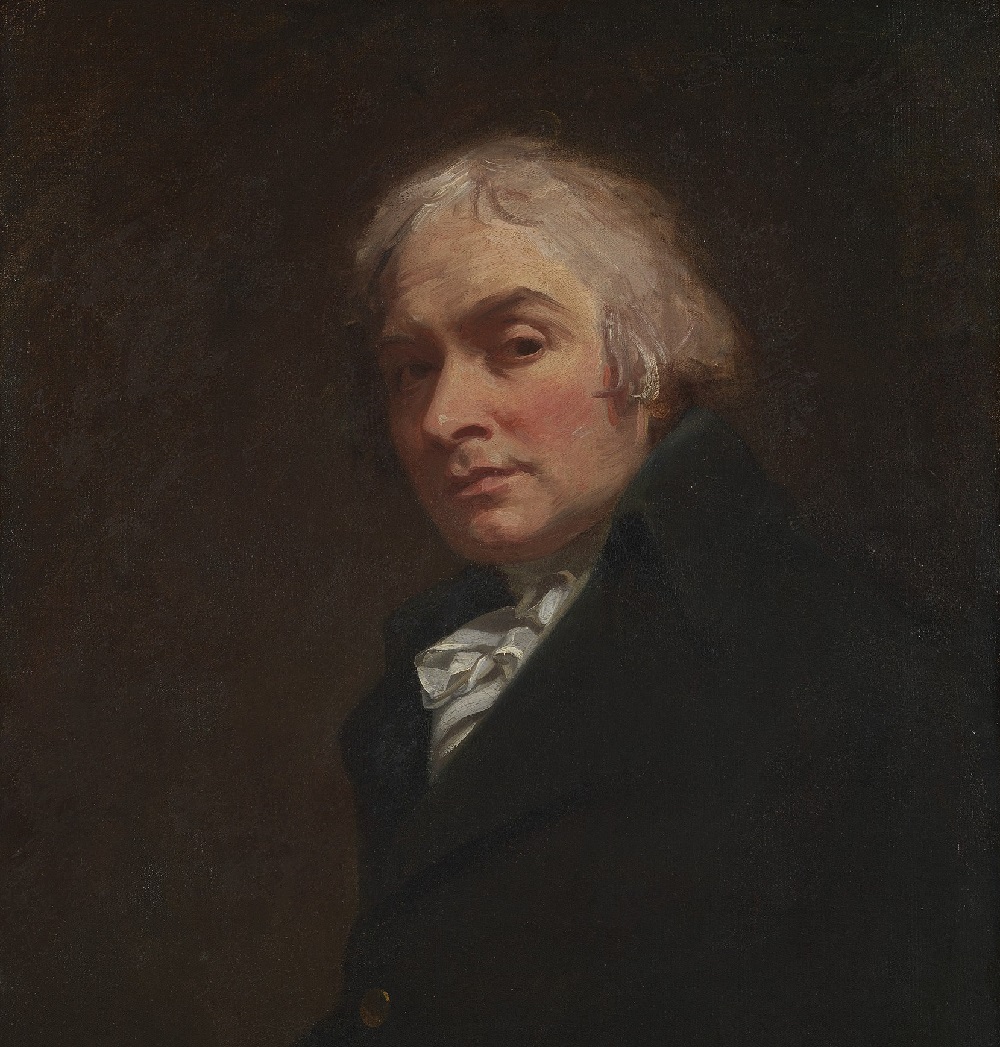
George Romney was an English portrait painter. He was the most fashionable artist of his day, painting many leading society figures – including his artistic muse, Emma Hamilton, mistress of Lord Nelson.

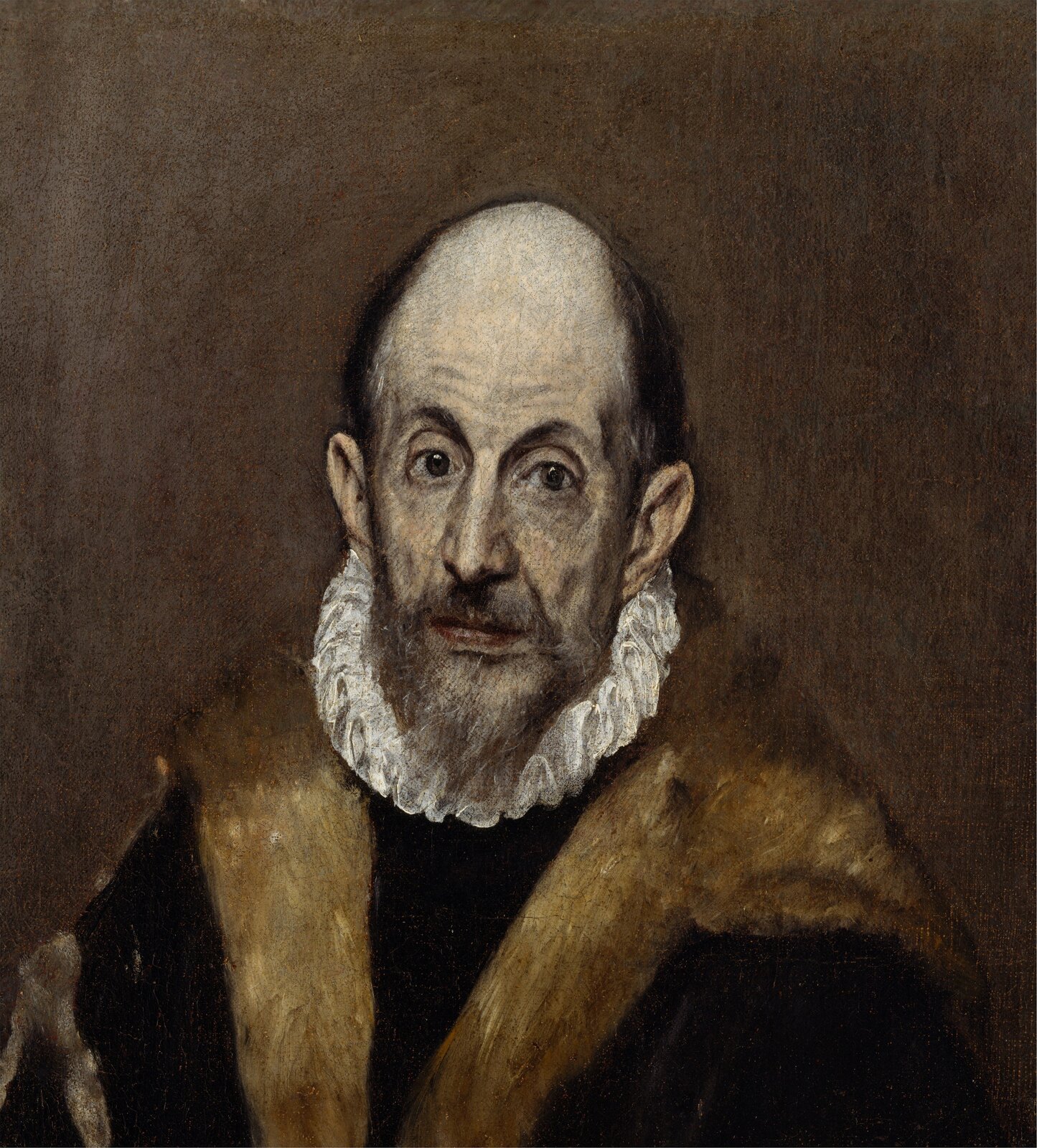
Domínikos Theotokópoulos, most widely known as El Greco ("The Greek"), was a Greek painter, sculptor and architect of the Spanish Renaissance.
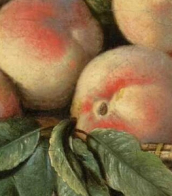

Lucas Cranach the Elder was a pivotal figure in German Renaissance art. As a leading painter of Saxony, his influence spanned across the 16th century, making significant contributions through his paintings, woodcuts, and engravings. His artistic journey began under the tutelage of his father, Hans Maler, and saw him becoming court painter to the Elector of Saxony, where he produced a vast array of works including altarpieces, court portraits, and notably, portraits of Protestant Reformers.
Cranach's artistry was not confined to any single genre. He was renowned for his portraits of the aristocracy, deeply symbolic religious paintings, and engaging mythological scenes. His ability to capture the essence of the Protestant Reformation, notably through his portraits of Martin Luther, showcases his close connection to the movement and his role as a key figure in conveying its ideals through art.
A significant part of Cranach's legacy is his workshop in Wittenberg, which was a hub of artistic production. This workshop produced numerous works that bore his distinctive winged serpent signature, a mark of quality and innovation in the art of the period. Cranach's workshop was known for its efficient operation, enabling the production of a large volume of works that catered to the high demand of his time.
For collectors and experts in art and antiques, Lucas Cranach the Elder's work represents an intriguing intersection of art, culture, and history. His contributions to Renaissance art and his unique portrayal of religious and mythological themes continue to captivate audiences, making his work highly sought after in the world of art collection.
To explore more about Lucas Cranach the Elder's fascinating contributions to art and to stay updated on new discoveries or auction events related to his works, consider signing up for specialized updates. This subscription is designed for enthusiasts keen on delving deeper into the rich tapestry of Renaissance art and history, ensuring they remain well-informed of relevant sales and scholarly insights.


Aert de Gelder was a Dutch painter. He was the only Dutch artist to paint in the tradition of Rembrandt's late style into the 18th century.
As author of biblical scenes and portraits his style was inspired by Rembrandt's, using his artistic ideas, well into the 18th century, without being influenced by contemporary new fashions. From the artistic point of view his work can not be considered as passive imitation of the master; indeed, it stands for inventiveness in the narrative, taste for the theatrical and a strong emotional charge of the characters. All these traits made him one of the most important interpreters of Dutch painting of the late seventeenth century.

